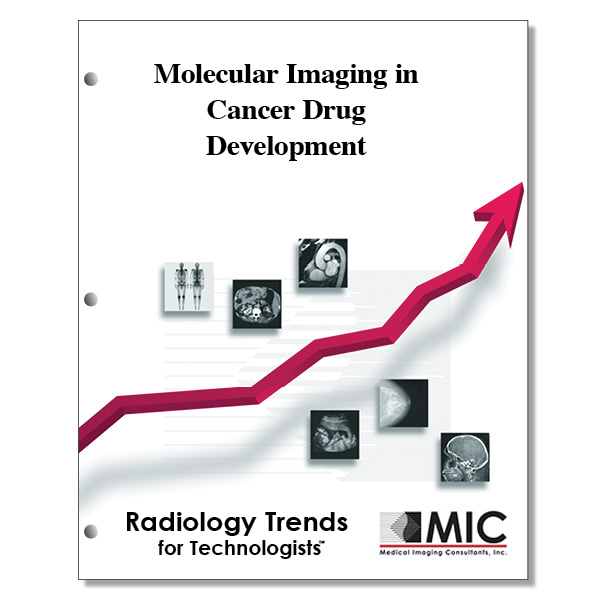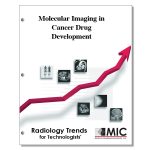

Molecular Imaging in Cancer Drug Development
Following an introduction on imaging modalities, this review addresses specific tracers with emphasis on radiolabeled drugs for small-molecule drugs, monoclonal antibodies, and antihormonal anticancer drugs.
Course ID: Q00576 Category: Radiology Trends for Technologists Modalities: MRI, Nuclear Medicine, PET, Radiation Therapy2.0 |
Satisfaction Guarantee |
$24.00
- Targeted CE
- Outline
- Objectives
Targeted CE per ARRT’s Discipline, Category, and Subcategory classification:
[Note: Discipline-specific Targeted CE credits may be less than the total Category A credits approved for this course.]
Nuclear Medicine Technology: 0.50
Procedures: 0.50
Radionuclides and Radiopharmaceuticals: 0.25
Endocrine and Oncology Procedures: 0.25
Outline
- Introduction
- Search Strategy
- General Introduction to Imaging Modalities
- Molecular Imaging Using Small-Molecule Cancer Drugs
- EGFR Inhibitors
- ALK Inhibitors
- PARP Inhibitors
- Molecular Imaging with mAbs
- Growth Factor Receptors
- Immunooncology
- ADCs
- Blood-Brain Barrier
- Antihormonal Therapy and 18F-FES PET or 18F-FDHT PET
- Optical Imaging in Drug Development
- Conclusion and Future Directions
Objectives
Upon completion of this course, students will:
- be familiar with the median cost for new cancer drug approval
- be familiar with the three phases of new cancer exploration
- understand the advantages of molecular imaging in the development of new cancer drugs
- be familiar with the advantages PET imaging offers in development of new cancer drugs
- be familiar with radionuclides used in SPECT imaging
- recognize the advantages of 89Zr for mAb imaging
- be familiar with the definition of a microdose
- be able to identify examples of radiolabeled small-molecule cancer drugs
- be familiar with first-generation EGFR inhibitors
- be familiar with 18F-IRS as a novel radiotracer to image EGFR
- be familiar with most commonly used EGFR TKIs in NSCLC patients
- recognize the early success of using osimertinib for brain metastases
- be familiar with the advantages of using EGFR-TKI PET in CNS imaging
- be familiar with the percentage of NSCLC patients with a genetic aberration involving ALK
- be able to identify a third-generation ALK inhibitor
- be familiar with common metastatic sites for patients with NSCLC
- be familiar with the radiolabeled PARP inhibitor 18F-fluorthanatrace
- be familiar with the biological half-life of mAbs
- be able to identify the targets for mAbs
- be familiar with the prerequisites for mAb to work properly
- be familiar with the radiolabeled mAb that has been studied extensively in patients with HER2 positive metastatic breast cancer.
- be familiar with the use of 111In-trastuzumab SPECT imaging
- be familiar with the targets for visualization when using 89Zr-bevacizumab
- recognize the advantages of using humanized mice when predicting drug behavior in humans
- be familiar with the effects of ADCs
- identify the combination of imaging studies used to predict which patients will not benefit from trastuzumab emtansine treatment
- be familiar with the percentage of breast cancers that express ER
- be familiar with the research being conducted on the use of 18F-FES PET to gain whole-body information on ER expression
- be familiar with the use of 18F-FDHT to assess pharmacodynamics during hormonal therapy in prostate cancer patients
- understand the advantages of using a toolbox of techniques to explore cancer drug development
